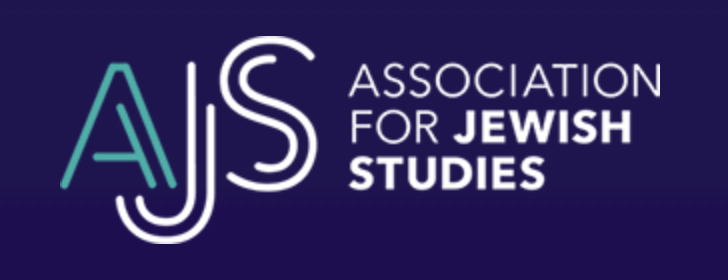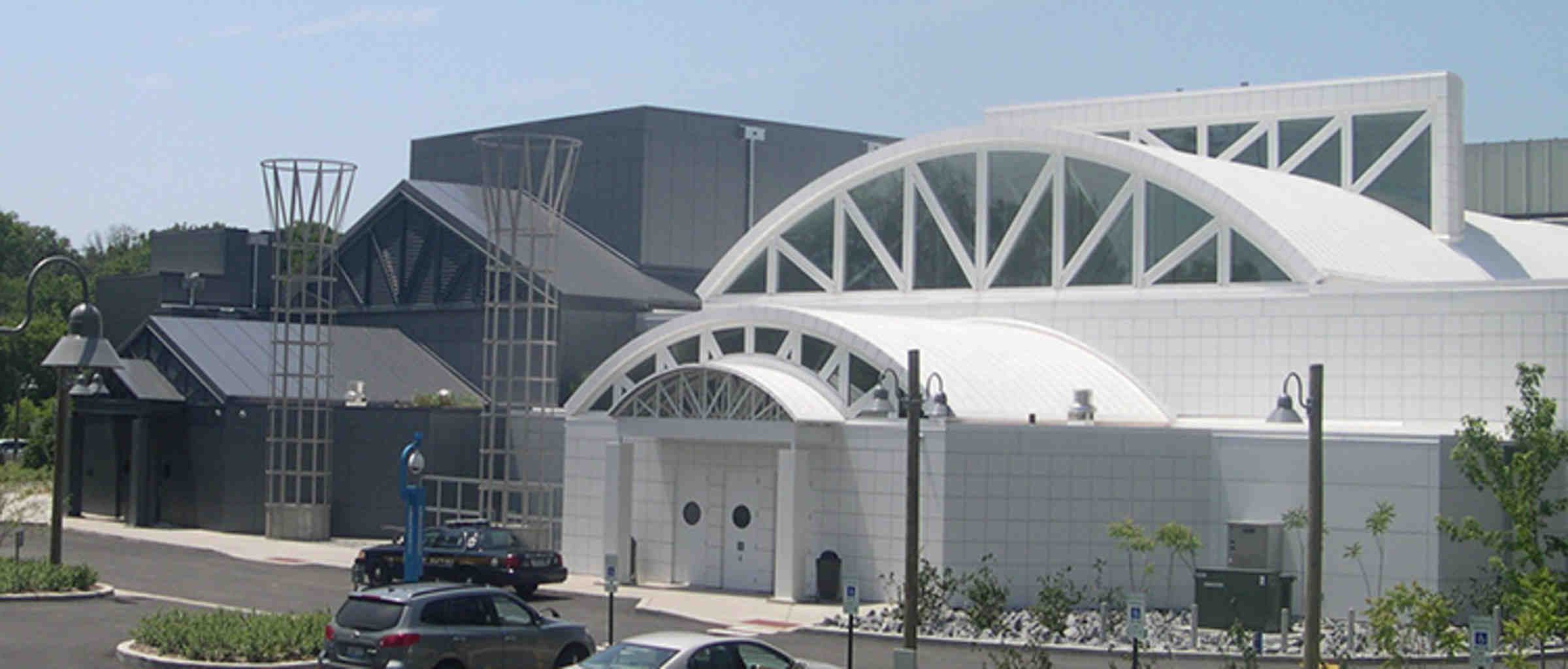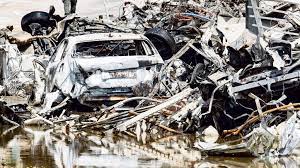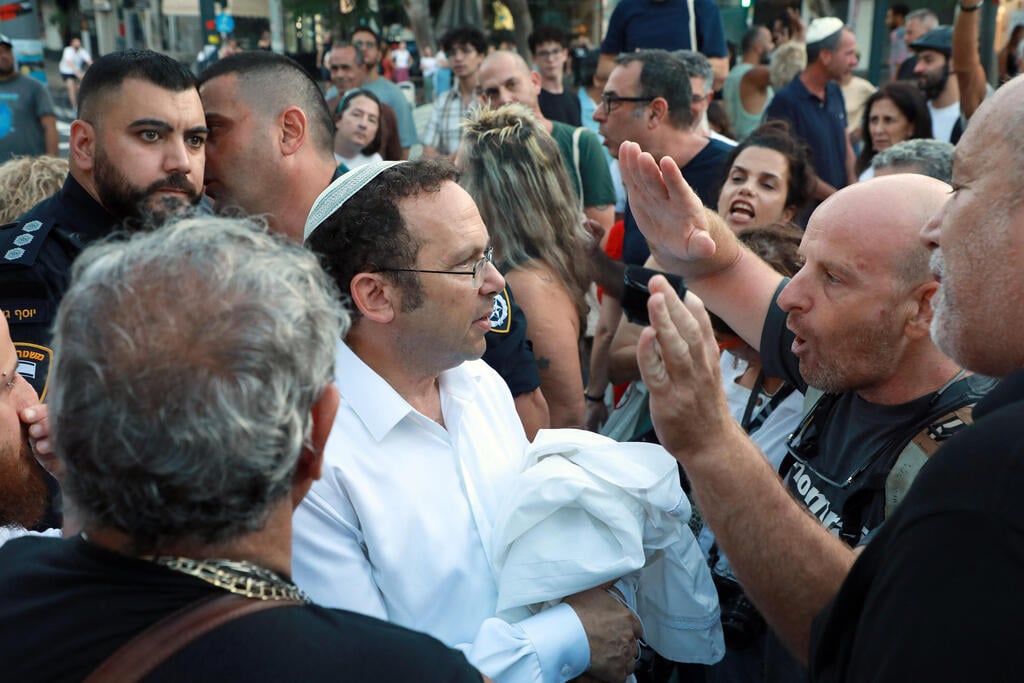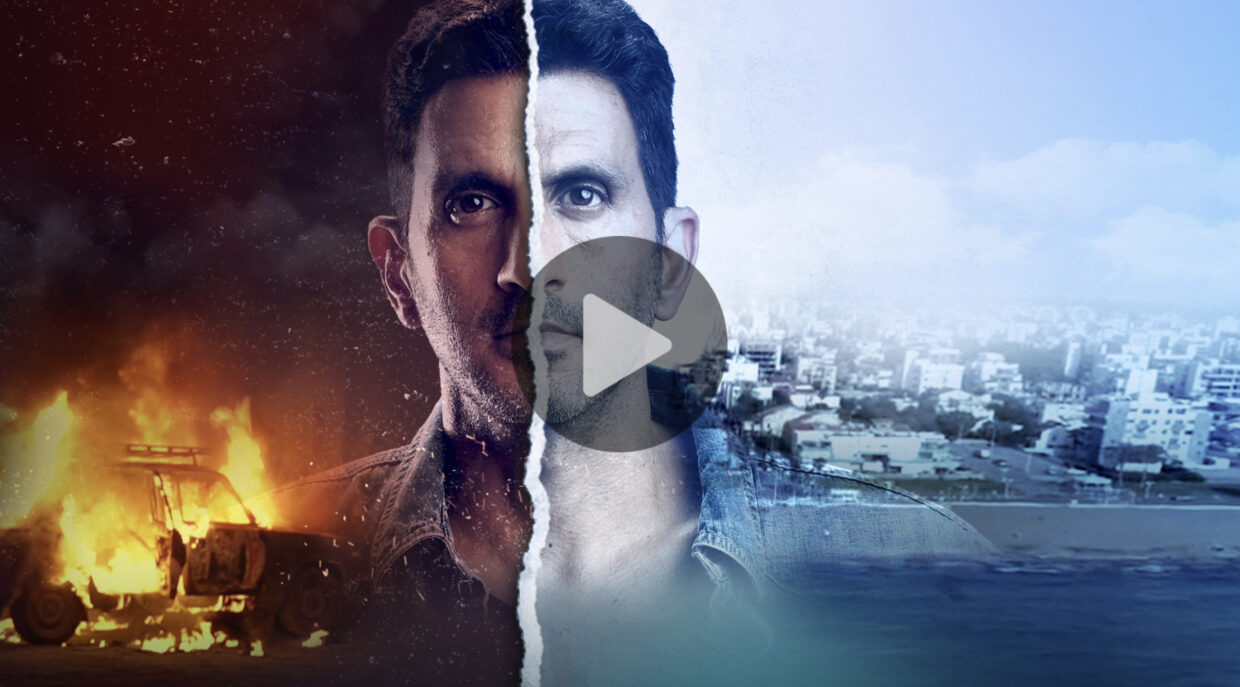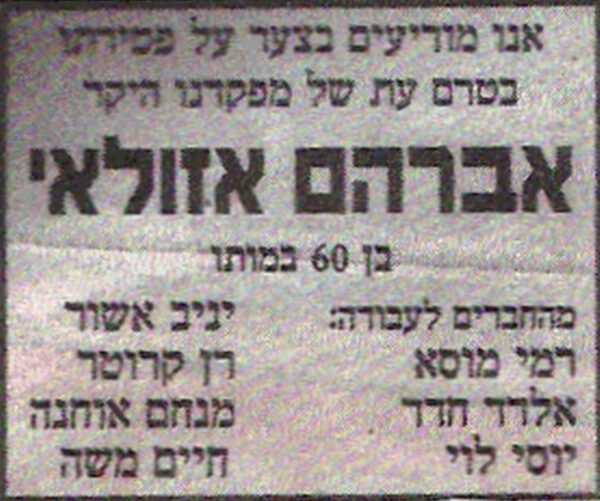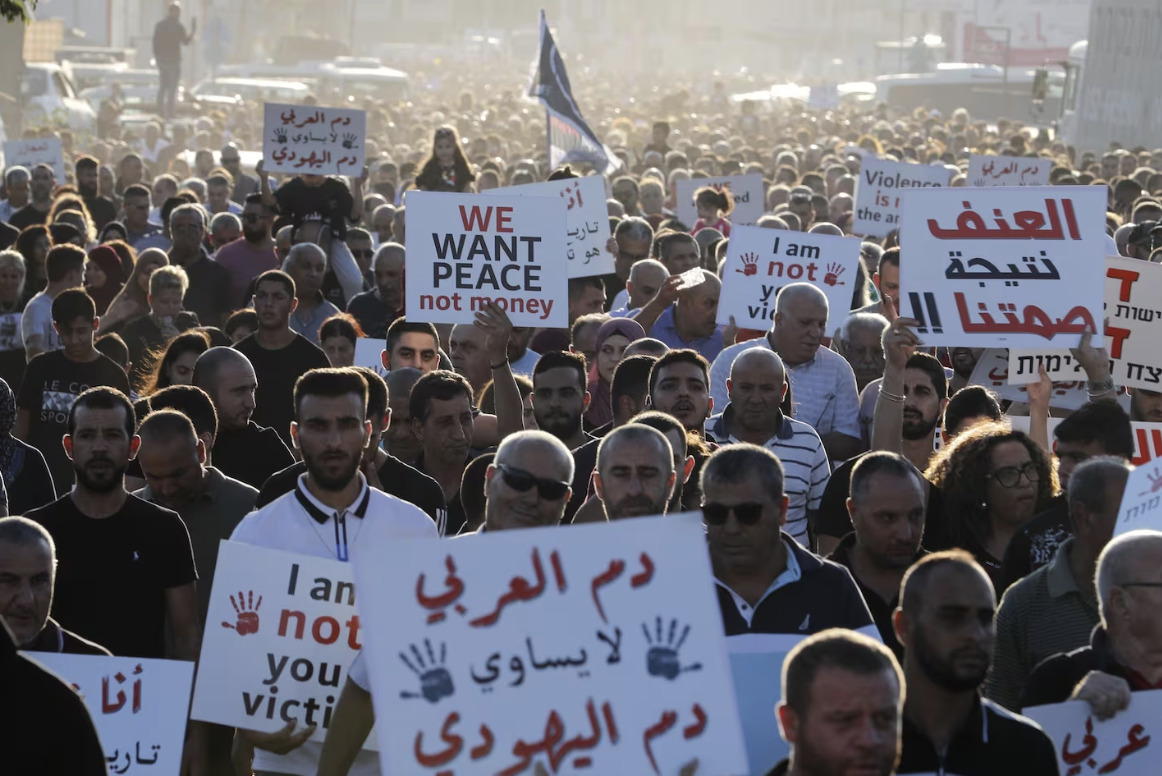This week’s parashah has some famous stories: the sale of Esau’s birthright for a stew; Jacob’s deceitful procurement of his father’s blessing. But I found something that spoke to me in a less-known wrinkle in the plot: the story of Isaac and the wells. Isaac lives near Gerar, in proximity to Avimelekh’s people, and to avoid being killed by people who might lust for Rebecca he does the same trick his father pulled twice: he pretends Rebecca is his sister. The jig is up, eventually, and Avimelekh orders his people not to touch Isaac. But people living in proximity and fighting over scarce resources during a famine is not a recipe for peace and harmony. Here’s what happened next (Genesis 26: 12-22):
Isaac sowed in that land and reaped a hundredfold the same year. יהוה blessed him, and the man grew richer and richer until he was very wealthy: he acquired flocks and herds, and a large household, so that the Philistines envied him.
And the Philistines stopped up all the wells which his father’s servants had dug in the days of his father Abraham, filling them with earth.
And Abimelech said to Isaac, “Go away from us, for you have become far too big for us.” So Isaac departed from there and encamped in the wadi of Gerar, where he settled.
Isaac dug anew the wells which had been dug in the days of his father Abraham and which the Philistines had stopped up after Abraham’s death; and he gave them the same names that his father had given them.
But when Isaac’s servants, digging in the wadi, found there a well of spring water,
the herdsmen of Gerar quarreled with Isaac’s herdsmen, saying, “The water is ours.” He named that well Esek, because they contended with him.
And when they dug another well, they disputed over that one also; so he named it Sitnah.
He moved from there and dug yet another well, and they did not quarrel over it; so he called it Rehoboth, saying, “Now at last יהוה has granted us ample space to increase in the land.”
Genesis 26: 12-22
Shortly after Trump was elected, I remember talking to two of my neighbors. They’ve been together forever, through the fight for gay rights and AIDS widowhood and the horrid deaths around the Castro and the murders of Milk and Moscone and the fight for equality. Tough guys, and at the same time full of joy. And what they said was, “we’ll just have to do all that…. AGAIN.”
I found their courage and perseverance inspiring–just as I find Isaac’s tenacity in digging wells, again and again. He didn’t sit by the well and bemoan his victimization. He didn’t deconstruct Philistine supremacy. He got to work. And I think those of us in the diaspora, encountering noxious views, hatred, ignorance, and violence, have to resign ourselves to the same task: unclogging old wells, digging new ones, and finding fresh water.
Apparently, my essay about antisemitism in academia has been making the rounds, and I’m getting lots of supportive reactions, but to my dismay many of them are compassion for my supposed victimization. This was not at all my intent when writing it. It’s natural for my Israeli and Jewish students to complain that the endless compassion for, and alliances with, any oppressed group have passed them by. But I would be very upset if the upshot of all this, the measure of success, were to be an inclusion of this additional voice in the petulant choir of victims.
Isaac didn’t sit and cry to God about how he was a victim of oppressive well-clogging. He didn’t petition the Philistines to recognize his disenfranchisement. What he did do was fight like hell. Some of those fights he lost, and he called those wells what they were: monuments of hatred. But he got straight to work and unclogged other wells, or dug up fresh ones. He and his servants took the trouble to dig deep, until they were sure they were provided for.
I’m already dreaming up ways to dig wells and keep their waters from getting rancid. I want to invite you, readers, to do the same. Here are some things I have found inspiring this week along these veins.
First thing, rather than sit and weep as people clog your wells, is to stand up to them and refute their claims to the water. Simon Sebag-Montefiore’s excellent essay The Decolonization Narrative Is Dangerous and False is an excellent, historically informed rebuttal to the usual claptrap one hears on campuses these days. Only last week, a grown, educated man stood up in an auditorium at my workplace and, in front of 200 people and apparently completely unashamed, chalked up the horrid, irrefutable facts of the horrid massacre to “Israeli disinformation.” He also regurgitated the usual ideological package, which Sebag-Montefiore’s summarily dismisses as follows:
This ideology, powerful in the academy but long overdue for serious challenge, is a toxic, historically nonsensical mix of Marxist theory, Soviet propaganda, and traditional anti-Semitism from the Middle Ages and the 19th century. But its current engine is the new identity analysis, which sees history through a concept of race that derives from the American experience. The argument is that it is almost impossible for the “oppressed” to be themselves racist, just as it is impossible for an “oppressor” to be the subject of racism. Jews therefore cannot suffer racism, because they are regarded as “white” and “privileged”; although they cannot be victims, they can and do exploit other, less privileged people, in the West through the sins of “exploitative capitalism” and in the Middle East through “colonialism.”
This leftist analysis, with its hierarchy of oppressed identities—and intimidating jargon, a clue to its lack of factual rigor—has in many parts of the academy and media replaced traditional universalist leftist values, including internationalist standards of decency and respect for human life and the safety of innocent civilians. When this clumsy analysis collides with the realities of the Middle East, it loses all touch with historical facts.
Simon Sebag-Montefiore, “The Decolonization Narrative Is Dangerous and False”, The Atlantic, October 27, 2023
Montefiore proceeds to unpack the roots of the crisis. He does not shy away from strident critique of Israel’s policy, of the occupation, and especially of the disastrous Netanyahu government. And he also does not shy away from taking apart, and disproving, both the “settler colonial” idea and the “genocide” tag.
The concept of “partition” is, in the decolonization narrative, regarded as a wicked imperial trick. But it was entirely normal in the creation of 20th-century nation-states, which were typically fashioned out of fallen empires. And sadly, the creation of nation-states was frequently marked by population swaps, huge refugee migrations, ethnic violence, and full-scale wars. Think of the Greco-Turkish war of 1921–22 or the partition of India in 1947. In this sense, Israel-Palestine was typical.
At the heart of decolonization ideology is the categorization of all Israelis, historic and present, as “colonists.” This is simply wrong. Most Israelis are descended from people who migrated to the Holy Land from 1881 to 1949. They were not completely new to the region. The Jewish people ruled Judean kingdoms and prayed in the Jerusalem Temple for a thousand years, then were ever present there in smaller numbers for the next 2,000 years. In other words, Jews are indigenous in the Holy Land, and if one believes in the return of exiled people to their homeland, then the return of the Jews is exactly that. Even those who deny this history or regard it as irrelevant to modern times must acknowledge that Israel is now the home and only home of 9 million Israelis who have lived there for four, five, six generations.
Most migrants to, say, the United Kingdom or the United States are regarded as British or American within a lifetime. Politics in both countries is filled with prominent leaders—Suella Braverman and David Lammy, Kamala Harris and Nikki Haley—whose parents or grandparents migrated from India, West Africa, or South America. No one would describe them as “settlers.” Yet Israeli families resident in Israel for a century are designated as “settler-colonists” ripe for murder and mutilation. And contrary to Hamas apologists, the ethnicity of perpetrators or victims never justifies atrocities. They would be atrocious anywhere, committed by anyone with any history. It is dismaying that it is often self-declared “anti-racists” who are now advocating exactly this murder by ethnicity.
Those on the left believe migrants who escape from persecution should be welcomed and allowed to build their lives elsewhere. Almost all of the ancestors of today’s Israelis escaped persecution.
If the “settler-colonist” narrative is not true, it is true that the conflict is the result of the brutal rivalry and battle for land between two ethnic groups, both with rightful claims to live there. As more Jews moved to the region, the Palestinian Arabs, who had lived there for centuries and were the clear majority, felt threatened by these immigrants. The Palestinian claim to the land is not in doubt, nor is the authenticity of their history, nor their legitimate claim to their own state. But initially the Jewish migrants did not aspire to a state, merely to live and farm in the vague “homeland.” In 1918, the Zionist leader Chaim Weizmann met the Hashemite Prince Faisal Bin Hussein to discuss the Jews living under his rule as king of greater Syria. The conflict today was not inevitable. It became so as the communities refused to share and coexist, and then resorted to arms.
Sebag-Montefiore also persuasively argues that this “decolonization” narrative is the worst thing that can happen to this conflict now:
Since its founding in 1987, Hamas has used the murder of civilians to spoil any chance of a two-state solution. In 1993, its suicide bombings of Israeli civilians were designed to destroy the two-state Oslo Accords that recognized Israel and Palestine. This month, the Hamas terrorists unleashed their slaughter in part to undermine a peace with Saudi Arabia that would have improved Palestinian politics and standard of life, and reinvigorated Hamas’s sclerotic rival, the Palestinian Authority. In part, they served Iran to prevent the empowering of Saudi Arabia, and their atrocities were of course a spectacular trap to provoke Israeli overreaction. They are most probably getting their wish, but to do this they are cynically exploiting innocent Palestinian people as a sacrifice to political means, a second crime against civilians. In the same way, the decolonization ideology, with its denial of Israel’s right to exist and its people’s right to live safely, makes a Palestinian state less likely if not impossible.
Some sources tie these narratives to the flow of Qatari money into U.S. universities. A new NCRI report follows the money and correlates its sources with (1) the erosion of free speech and (2) the increase in antisemitic incidents on campuses.
Second order of business is to see who is actually unclogging wells, as opposed to shifting blame and whining, and support them. Unsurprisingly, these are the folks who stood day after day, shoulder to shoulder with my parents to protest the decay of the country. Since I mentioned the Netanyahu government, it is worth shining a light on the fact that, in the same way that Hamas is not Gaza, Netanyahu is not the Israeli people, and support for his government, which was already tenuous, has plummeted. Yair Rosenberg has a superb article in The Atlantic in which he unpacks what happened, and how the scorned, maligned lefties who led the anti-government protests in the last few months and proving to be more capable, dependable, and courageous than the government, to the point of supplanting it:
As Israel’s crony-filled Netanyahu government flailed and its security services faltered, ordinary citizens—many of them dissenters against the current ruling coalition—took charge. Crisis tends to separate the poseurs from the professionals, and the deadliest day in Israel’s history did just that.
Rosenberg gives some examples: the heroism of Yair Golan and Noam Tibon, who, as the army dawdled, were already on the ground rescuing people; Eylon Levy, who stepped up to do international outreach after the official minister of outreach, who is a nincompoop, quit her job just when she was actually needed. In general, he says,
Within Israel, relief efforts have been dominated not by government officials but by volunteers, many of whom come from the organized anti-government protest movement. Hamas’s massacre left thousands of southern Israelis traumatized, orphaned, and homeless, in need of food, shelter, and mental-health care. The subsequent Hezbollah attacks in the north have forced entire towns to evacuate. In total, about a quarter million Israelis have been displaced. Many others are struggling to cope after family members were called up to join the fighting.
Faced with these gaping social needs largely unaddressed by the government, the largest civil-demonstration movement in Israeli history repurposed itself overnight. Working out of the Expo Tel Aviv convention center, 15,000 volunteers began distributing food and supplies to refugees, finding accommodations for thousands of families, and matching psychologists with patients. Some, led by the information scientist Karine Nahon of Reichman University, used AI tools to identify victims and hostages, sorting through hours of video footage from the assault. Others helped rescue 120 pets. In Jerusalem, another group of 4,000 protesters, overseen by Michal Muszkat-Barkan, a movement leader and professor at Hebrew Union College, has provided 30,000 hot meals, run daily blood drives, and recruited 200 mental-health professionals. Across Israel, the activists derided by Netanyahu and his hard-right ministers as leftist traitors have become the country’s rapid-response team.
Yair Rosenberg, “The Day After Netanyahu”, The Atlantic, November 10, 2023.
Finally, here’s a dose of tough love as we pick up the shovels. I know my students are grieving and shocked–not only about the horrid massacre and the unfolding outcome, which is disastrous for both Israelis and Palestinians, but also about the loss of their friendships and footing in the world. It feels like gaslighting–one loses grasp of reality and of one’s own convictions. But as I said to a couple of people this week, “people your age have left families at home and gone to serve in the reserves. You found out you have shit friends? Make better friends.” I was comforted to read similar words from Batya Ungar-Saron:
So do not cast your lot as a competitor in the oppression Olympics. Instead, reject that entire way of looking at the world.
Here’s the thing: it’s good to be unpopular with a mob whose worldview has done away with the concept of right and wrong and decided, with a Nazi-like commitment to racial ideology, that you are Jewish and therefore you are white and therefore you are bad. It is good to be unpopular with people who spent the weeks after October 7 on the hunt for Jewish exaggeration, Jewish lies, Jewish crimes. It is good to be unpopular with people who cannot separate evil from power and virtue from skin color. (Unpopularity, for now, is your fate, unless you are willing to cosign your own humiliation and join the left’s token “good Jews” who advocate against Zionism from the comfort of the diaspora for plaudits from the Squad.) We don’t answer to them; we answer to the God of Abraham, Isaac, and Jacob, the Rock of Israel and its Redeemer.
The good news is: it may not feel like it, but this country is on your side. College students are in one of vanishingly few spaces in America that sides with Hamas. Your professors will live and die in irrelevance, signing their names to their silly little letters and coming up with new jargon with which to defend terrorism while nurturing their grandiose hero complexes. Most of your peers will grow up and abandon their radical chic commitments. The progressive movement has taken a big hit, having shown its true colors to a nation that knows what is good and what is right, that can separate barbarism from civilization.
But for now, remember this: to be a Jew is to refuse to kneel and refuse to bow. The stakes of standing upright have never been clearer than they are today, in this post–October 7 world. It’s good to have these people as your enemies, because the world will always have people who oppose what’s right and what’s good, and it is our destiny to fight them. Do it with pride.
Batya Ungar-Saron, “The Antisemites Scream. And I Stiffen My Spine.” The Free Press, November 7, 2023.
Dig up the clogged wells and name them what your ancestors named them. Dig fresh wells. Fight for them. If you win, drink deep. If you lose, dig new wells.
Shavua Tov.

